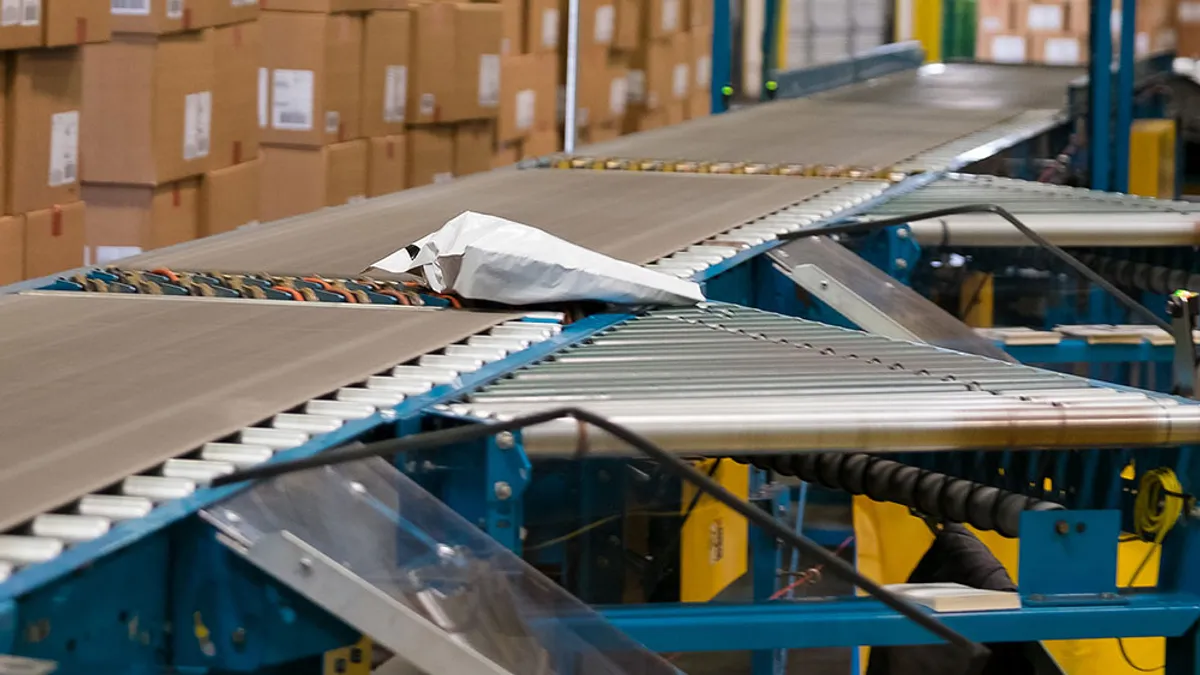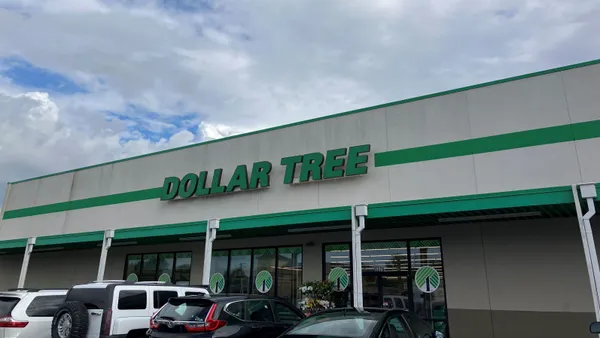Bag or box? They aren't the only packing options, but they are certainly the most prevalent when it comes to retail fulfillment. With ecommerce activity on the rise, planning for and designing DC efficiency around single order pick and pack operations is a necessary shift to remaining competitive in the retail industry.
Not only does this factor into meeting consumers' quick turnaround expectations but also in keeping costs low. When it comes to packing and shipping, you can make efficiencies in larger factors such as operations and system design but also in smaller details like the size of the parcel. Shipping fast and cost efficiently is a balancing act that starts in warehouse or distribution center design. Whether you are working with polybags, boxes or both, appropriate automation sizing and integration with surrounding equipment has immediate and lasting impacts.
System Design: Planning for Polybag Automation
Polybags are popular among retailers for their versatility in accommodating various apparel, accessories and footwear. The bag dimensions and low weight makes for smarter shipping and over all affordability. Below are some considerations that I have found valuable in maximizing efficiencies and keeping costs low.
#1 Item Profile – Take a look at the product types and sizes. Although there are various bag size options, not all products qualify for bag shipping. Delicate or odd-shaped products may require a box to accommodate for dunnage to protect products.
#2 Order Profile – Evaluate current and future customer order types to help determine the right machine and sizing for your operations. Will seasonal peaks require more boxes and less bags due to order complexity, or will shipping incentives (“Spend $25, get free shipping!”) drive units per order down and bag percentage up?
#3 Software Support – Some operations require the use of both bags and boxes but who makes the call on which orders are packaged certain ways? Should the operator decide or is more complete automation required, in which case the Warehouse Management System (WMS) needs to be engaged? Either way, tight integration with the WMS will help support label printing and inventory tracking. Also, keep in mind, that if the WMS is selecting bag or box, it will need accurate item dimensions to help make the call.
#4 System Technology & Integration – Consider surrounding equipment that leads to and from autobagging technology. Whether you are working with put walls or goods to person systems, sorting and transportation equipment should be considered for labor efficiency and appropriate conveyance design. HMI and visualization tools can also be leveraged to quickly identify and visually display the autobagger's status and needed servicing, helping to keep downtime at a minimum.
#5 Team Training and Maintenance Support – Similar to other automated equipment it takes time to adjust and dial in equipment. Having a solid understanding of how to maintain and service the equipment (solo and in relation to other equipment) is vital to ensuring operations continue uninhibited.
Types of Autobag Technology
There are numerous packing options but when it comes to bagging technology they tend to be categorized as either horizontal or vertical autobaggers. Like most material handling technologies, they can be fine-tuned for specific operations – number of machines and placement.
Horizontal Autobaggers
Similar to a shrink wrapper, horizontal autobaggers create the bag around the product. Generally, when in use, products may be picked to a put wall or via an automated goods to person system, they are then placed on a conveyor where they are fed through the horizontal autobagger.
In light of the automation and lower touch points, there are stringent requirements such as a single pair of shoes or single clothing item. With solid maintenance, horizontal autobaggers can generally process 800-900 bags per hour. This makes the machine ideal for small, straightforward ecommerce orders.
Vertical Autobaggers
Vertical autobaggers offer a top loading option where operators can drop items from the top before the bag is sealed closed. Depending on the system setup, operators will scan items and the WMS send the order information to the machine for a printed mailing label. Once the bag is filled and sealed it is moved to a bulk conveyor or conveyed label-up directly to a bag shipping sorter.
Vertical autobaggers are typically limited by the user loading it, and the packing process they follow. Users will often need to interact with a WMS, manage full and empty totes, walk to retrieve product, or deal with marketing inserts on top of simply loading the bag. Some installations can achieve 180 bags per hour or more, while others that require more intervention may end up in the 80-100 bags per hour range.
Supporting Technology Options
For companies that opt to have both bag and box packing options, automated box erectors help to support that effort. The machines build boxes of any shape or size. They can also help to produce and insert order documentation.
In-line equipment like scales and scanners help to confirm box fulfillment accuracy and sort packages to their relevant shipping bins.
Achieving Packing Efficiency
When it comes to general packing automation for ecommerce fulfillment, reducing touches is key to efficiency. Sizing, selecting and refining packing equipment, as part of the larger automated system design, is crucial to labor efficiency and low costs. Ultimately, the customer benefits from a fast and accurate delivery.
As an independent integrator we work with various advanced packing technology options and combine our industry experience to identify maximum efficiency opportunities in order help our customers achieve a competitive advantage in today's market. Talk to one of our engineers or download our retail apparel and footwear fulfillment strategy guide today.










